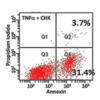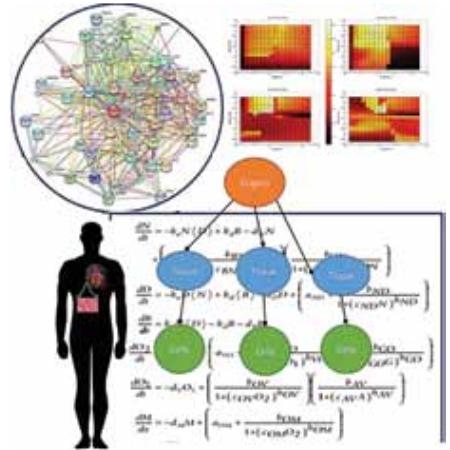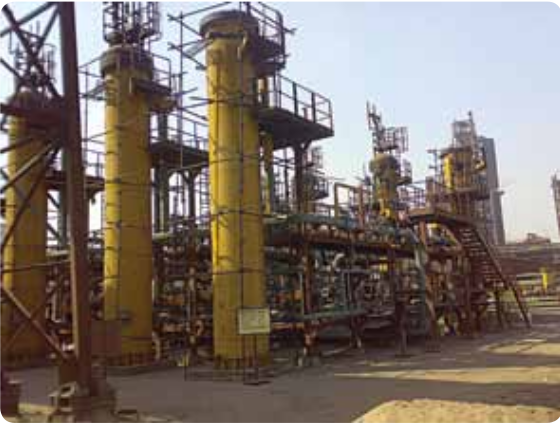Ganesh A Viswanathan
-
ganeshav@iitb.ac.in

Education
Courses
Research
Jurkat T-cells undergoing apoptosis following exposure to TNFα and Cycloheximide (CHX). Apoptosis detection via Annexin V staining in a population of cells achieved using flow cytometry
TNFα, a pleiotroiphic cytokine can trigger both pro-apoptotic and prosurvival responses. It has been implicated in cancer treatment, inflammation and autoimmune diseases. The main goal is to perform systems biology mathematical modeling based single-cell experimentation to identify the key molecular signatures of the TNFα signaling network that govern the phenotypic response of a cell exposed to the cytokine. Specifically, the focus is in identifying the optimal set of proteins alteration of whose normal functioning would cause the cell to achieve specific, predictable phenotypic response following exposure to TNFα. TNFα network contains many topological substructures such as interlinked feedback loops which affect the specific phenotype expressed. The lab is interested in understanding the purpose of these substructures and the role it may play in governing the eventual phenotype exhibited by the cell.

Flow chart depicting the methodology of “Systematic, Homology-based Automated Re-annotation of Prokaryotes (SHARP)” that uses distant-context based sequence similarity, functional region similarities, bidirectional hits for gene-protein-reaction (GPR) ass
Manual and automated curation approaches are used to develop novel, efficient, systematic methods for construction of signaling, regulatory and metabolic networks. The group is presently involved in developing well-annotated, comprehensive mammalian TNFα signaling network and in identifying the sub-structures and modules that would govern the overall functioning of the network. Recently, the lab has initiated work towards construction and analyses of regulatory and metabolic network of cyanobacteria with a view to develop strategies for engineering the strains for production of biofuel precursors.

Intrinsic noise propagates during signal transduction through series enzymatic cascade consisting of two sequential phosphorylationdephosphorylation cycles. Noise is amplified for a certain range of total number of upstream enzyme e0 . Noise estimated fro
Cells are constantly exposed to inevitable fluctuations or noise from variety of sources. These fluctuations propagate along with the signal and may strongly affect the phenotypic response exhibited by the cells. The lab is interested in characterizing noise propagation in various conserved modules of mammalian signaling networks such as the enzymatic cascades.

Transversal spatiotemporal temperature pattern formation during ethylene hydrogenation in catalytic packed-bed reactors. Increase in reactor diameter causes a transition from rotating patterns (at R/dp = 10) to spiral patterns (at R/dp = 40). dp is the ca
Catalytic packed-bed reactors are workhorse of chemical, petrochemical and pharmaceutical industries. The focus is tp predict the formation of spatiotemporal patterns in non-adiabatic catalytic, packed-bed reactors (PBRs) with an objective to identify the parameter range for safe operation of the reactor. Nonlinear dynamics of the patterns formed in PBRs are characterized using singularity theory and numerical bifurcation analyses.

Research Areas
Sub Areas
- Biomolecular Engineering
- Computational Biology
- Systems Biology
- Reaction Engineering
- Reactor Modelling
- Heat and Mass Transfer





